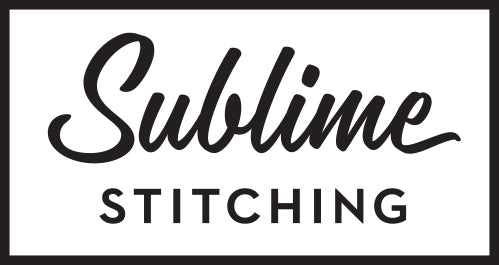How To: Floss Blending
Share



After I released the Ryan Berkley Embroidery Patterns. I promised to show you a really neat stitching trick that would go oh-so-well with this design. I am keeping my promise. Let's get started: Here's my stitched example of Mr. Fox (above). Hmmm. Needs something. I know! A frame.

It just so happens that there's a frame design included in the PDF. As if by amazing coincidence, this frame will also fit around each of the animal heads on the sheet! To center the fox's head, I decided to cut out the inner portion of the sheet so I could see where I was positioning it. Of course you can do this in different steps if you prefer: outline the frame first and then put the animal head within it. Personally, I think this is easier. I like how this looks here, so I'm going to tape it in place.
Now, how do you transfer the frame design? I'm so glad you asked!

Slip a piece of carbon transfer paper between the design and the fabric. Now, trace along the lines of the frame. Be sure you are working on a hard, smooth surface!
TIP: If you are not using a stylus to trace, then watch the ink from your pen and make sure it doesn't get on your hands (and on your fabric). Also, using a pen of a different color helps you see where you've already traced and where you haven't. How many times have you lifted up the design only to realize you skipped over a whole section? Just me? Okay. Well, that's a bummer. I hate it when I do that.
Now that you have the frame outlining the animal's head, here's the stitching trick I promised to show you:

Think of this as mixing paint without the mess. As I was about to stitch up the frame, I wondered "How can I make it look more like wood?" I went deep into thought, closed my eyes and finally had it: Floss blending is the answer! There's really not much to it:
1. Pick two colors. For a wood effect, I chose a light beige and a dark brown from the portrait palette.
2. Separate away the strands. (Here's help on how to separate strands of floss.) Basic, cotton embroidery floss is made up of six strands (also called a "ply"). You can strip away individual strands for finer detail, but I often stitch with all six strands (because I like the chunky look it gives my stitches).
To blend floss colors, separate away three strands of one color, three strands of the another color (or two and two if you want a finer line). Now, re-combine the lengths, making sure they are lined up and not all tangly. Just make sure the ends meet, and give the length a long stroke between your thumb and index finger. Thread Heaven is always good to have nearby.
Make sense? You should now have a single, combined length of floss, made up of six strands total: three of the light brown, three of the dark brown. We'll say 3/3 for shorthand, okay? Thread your needle with this new length and let's see what happens...
I tested different stitches to see what the effects would be. A back stitch, split stitch, stem stitch and chain stitch. Hmmm. Verrry interesting. See how each stitch gives different results? Entirely up to you which you like best. I decided I liked the results of the split stitch the best. I also made another important change...

I decided that the colors I chose were too similar, so I picked an even lighter beige to contrast with the dark brown. I also made another change: instead of 3 and 3, I worked with 4 and 2. In other words: I used 4 ply of the light beige and only 2 of the dark brown. Who said the strands had to be evenly balanced? Not me. You do what you want to do. See the results above? I liked it! That's what matters: that you are happy with the results.

Stitch, stitch, stitch. I stitched up the whole frame this way. Instead of just being solid brown, it has this unpredictable, mottled "wood look" to it. Don't you think? I think I'm going to keep stitching on this piece even more. Maybe sprinkle the background with blue French knots, or continue building up the frame. See ya! I'm off to do more x-x-x'ing.

Now that you know how to blend your floss, does this give you any other bright ideas?











